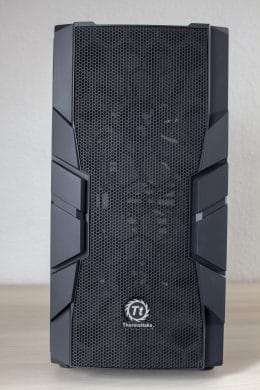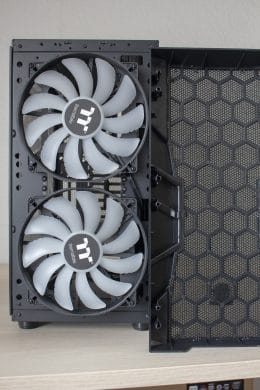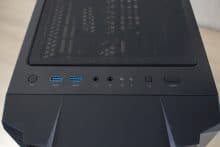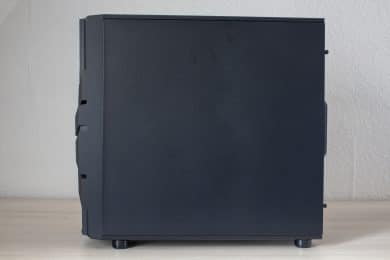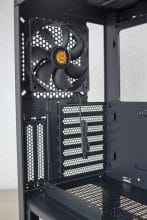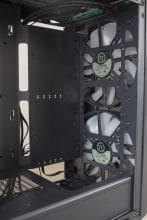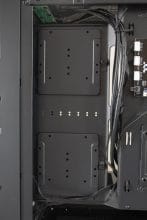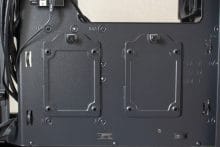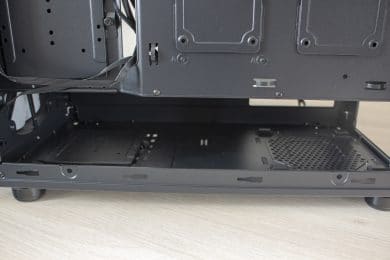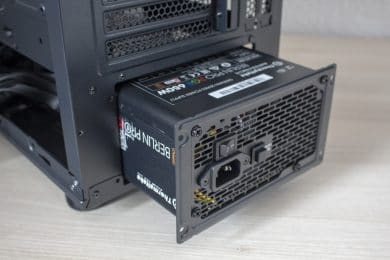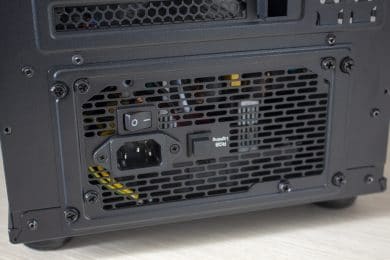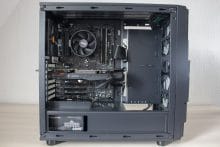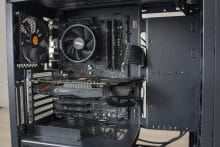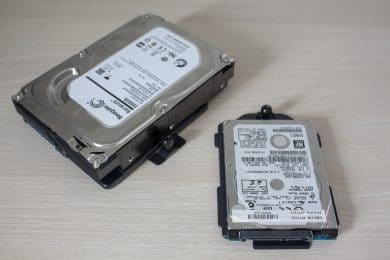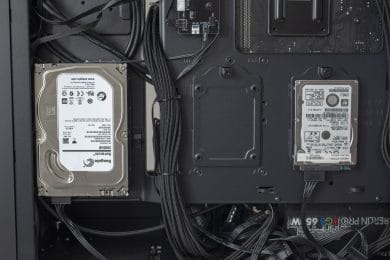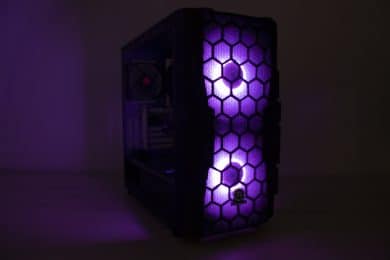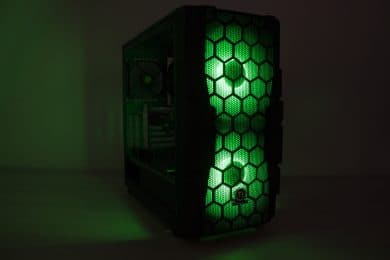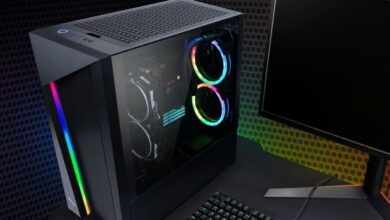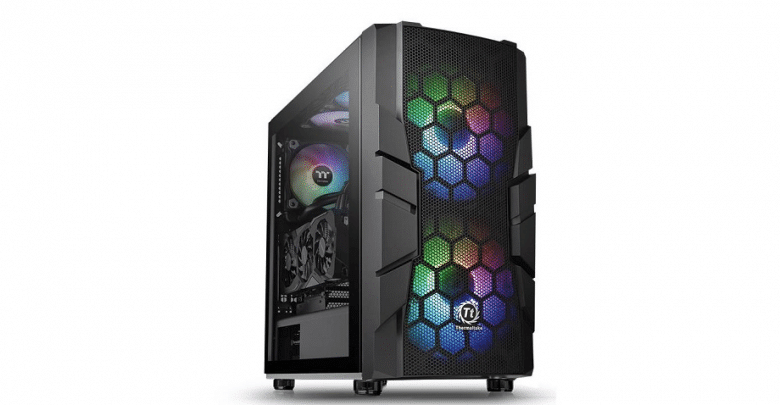
The manufacturer Thermaltake introduced six new cases at the beginning of the year to revive the Commander series. The new enclosures are named Commander C31 to 35 and will feature high airflow, plenty of space, tempered glass and two huge 200 mm RGB fans. In all variants the body is identical and only the front elements differ in their unusual design. The housings are available in black and partly also in white.
In the following review we take a closer look at the Thermaltake Commander C33 TG ARGB in black and check if it delivers what the manufacturer promises. The case is available from € 19.99 *.
Technical Details
| Model: | Commander C33 TG ARGB |
| Housing type: | Midi Tower |
| Dimensions: | 233 mm (W) x 462 mm (H) x 518 mm (D) |
| Weight: | approx. 7.84 kg |
| Material: | Steel, plastic, tempered glass |
| Color: | Black |
| Front connections | 2x USB 3.0 Type-A, 1x loudspeaker, 1x microphone |
| Drive bays: | 3x 3,5″ (internal) or 2x 2,5″ (internal) 2x 2,5″ (internal) |
| Extension slots: | 7 (horizontal), 2 (vertical) |
| Form factors: | ATX, mATX, mini-ITX |
| Ventilation: | Front: 2x 200 / 2x 140 / 3x 120 mm Lid: 2x 140 / 2x 140 mm Rear: 1x 120 mm |
| Radiators: | Front: 1x 360/ 1x 280/ 1x 240 mm Cover: 1x 280/ 1x 240 mm Rear: 1x 120 mm |
| Max. CPU cooler height: | 180 mm |
| Max. Graphics card length: | 410 mm 310 mm (with AGB) |
| Max. Power supply length: | 200 mm (with HDD installed) |
| Place for front radiator | 75 mm |
| Cable management space: | 25 – 30 mm |
| Price: | € 19.99 * |
| Special features: | magnetic dust filters, cable management, acrylic side panel |
Scope of Delivery
The Thermaltake Commander C33 TG ARGB comes well and safely packed in a plain brown cardboard box with a picture of the tower and all important data printed on it. In the carton the C33 is wrapped in normal polystyrene and a plastic bag. There is also a protective film on both sides of the glass window to protect against scratches. The accessory bag is attached inside the case and contains all the important screws, a power supply frame, a mainboard speaker, two cables to connect the RGB board, ten black cable ties and an illustrated manual in several languages. The scope of delivery also includes two RGB fans with a frame width of 200 mm, a normal fan with a width of 120 mm, a control board for controlling the RGB functions and the pre-installed spacers.
Exterior Impression
Externally, the Commander C33 or the entire Commander series definitely belongs to the more conspicuous cases. The front is dominated by lots of mesh and unusual shapes and lines. If you remove the front panel, you can see the two huge RGB fans with a frame width of 200 mm. Together with the mesh, these two fans should provide a high airflow and a good cooling of the installed components.
Now let’s take a look at the lid section. This is also optimised for high airflow and therefore also has a large opening and mounting rails for two 120 or 140 mm fans. All openings are covered by a practical magnetic dust filter so that the optics do not have to suffer as a result. The I/O panel is located in the front area of the cover. The manufacturer has equipped this with two USB 3.0 ports, two connectors for microphone or headphones and three buttons for power, reset and RGB control.
The right side panel of the Commander C33 is completely closed and fastened with two knurled screws. The left side part consists of a 4 mm thick and slightly tinted tempered glass, sits on a steel frame and is also fastened to the back with two knurled screws.
There are no special features on the underside. The case stands on four solid and rubberized plastic feet in silver HIFI look. The dust filter for the power supply is unfortunately only a simple mesh mat without any extraction aid. At a price of € 19.99 * a high quality solution would have been appropriate.
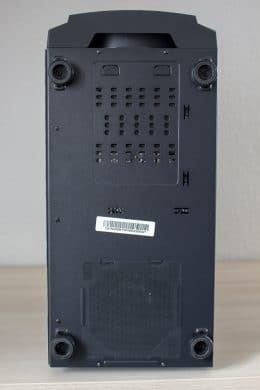
The rear side is particularly distinguished by two features. Instead of the pre-installed 120 mm fan, a 140 mm fan could also be retrofitted here. In addition, the two vertical PCI slot bezels for vertical mounting of graphics cards catch the eye. Standard, however, is the mounting position of the power supply unit at the bottom of the Midi Tower.
The external workmanship is very good throughout. The paint is well applied, there are no sharp edges and the gap dimensions are the same everywhere. There’s nothing to criticize here.
Internal Impression
If one removes the side parts, one thing becomes immediately clear: in the Thermaltake Commander C33 there is a lot of space. The front of the interior is similar to many current enclosures from other manufacturers. The interior is spacious and divided into two areas by a power supply panel. As usual, the upper zone accommodates the mainboard and expansion cards. The pre-installed case fans are able to freely transport air into the interior due to the absence of hard disk cages. In addition, there is a huge cut-out in the power supply cover for mounting a radiator. To ensure that everything is tidy after assembly, the cable management openings around the mainboard tray should not be missing either.
The power supply cover was also equipped with a cable management opening. In addition, the cover was also provided with an extensive perforation. This would make it possible to mount the power supply with the fan pointing upwards, if necessary. A last feature on the power supply tunnel is the preparation for a PCIe riser card with which the graphics card can be placed vertically. However, only the preparation is available ex works, an appropriate circuit board or the necessary riser cable must be purchased separately.

Let us now turn to the back. As you can already guess from the case width, there is a lot of space behind the mainboard tray for cables and other hardware. To the left of the mainboard tray there are two metal slides that are fastened with a knurled screw. Either a 3.5″ or a 2.5″ hard disk can be mounted on these slides. If that’s not enough for you, there’s another metal plate on the floor for hard drives. Furthermore, two frames for 2.5″ SSDs are hidden on the right side of the mainboard carriage.
The power supply unit is also installed below the tunnel. This has a mesh dust filter and is mounted on small rubber discs for decoupling. However, the assembly is a bit more complex. More about this in the next chapter.
System Construction in Thermaltake Commander C33 TG ARGB
Now we come to system installation. As hardware we use a AMD Ryzen 5 1400* on a MSI B350 PC Mate* with 16GB Crucial Ballistix Sport LT grey DDR4-2666*. A GTX 1060 6GB from Gigabte AORUS* is responsible for the image output. The power supply is done by the non-modular Berlin Pro RGB 650W* with RGB fan. In order to enhance the cabling optically a little bit, single sleeved cable extensions from Phanteks.
As mentioned before, the interior is very spacious and also allows the assembly of current high-end components. A maximum of 180 mm is available for CPU coolers and 410 mm for graphics cards. After a short research on a price comparison platform, there is no cooler and no graphics card that would not fit into this Midi Tower. It looks similar with the power supply. If you don’t install a HDD on the floor, there is no limit for the PSU either.
In addition to air cooling support, the C33 also supports water cooling components. Thus, a maximum of one 360 mm radiator can be installed in the front and a maximum of one 280 mm radiator in the lid. As always, however, the compatibility depends on the height of the RAM or VRM coolers.
The installation of the mainboard and the expansion cards was quickly done and also feasible with big hands. A little more complex was the assembly of the power supply unit. This must first be connected to the power supply panel using four screws. Then push the power supply unit with cover from behind under the power supply unit cover and fasten it to the body with four further screws. Here Thermaltake could have replaced at least a part of the screws with knurled screws.
In the following, however, there were no problems with the wiring. Even with the cable extensions, the front and back look very tidy and displayable.
The assembly system for the hard disks requires the use of a screwdriver, but does the job quite well. Because the metal slides lie directly on the mainboard tray, there is no decoupling. So at fast turning data carriers could come up swinging transmission at corpus.
As with every review, the temperature test should of course not be missed. For this purpose, Prime95 and Furmark were run for 15 minutes at a room temperature of 19.5 °C and the CPUID HWMonitor was then used to determine the temperature of the processor and graphics card. As you can see from the following, the temperatures are absolutely in the green range. The airflow inside is very high.
Fan speed |
Temperature |
| CPU: 100%. Case fan front: 100%. Case fan rear: 100% |
CPU: 50 °C GPU: 61 °C |
| CPU: 50% Case fan front: 100%. Case fan rear: 50% |
CPU: 56 °C GPU: 61 °C |
However, this high airflow has a big side effect. The two front fans are directly connected to the control board via proprietary connections and cannot be regulated in their speed. Since both fans are estimated to rotate at 800-1000 rpm, this produces clearly audible and unpleasant air turbulence. The same applies to the normal rear fan when it is running at its full 1200 rpm. After all, it has a 3-pin connector and can be connected directly to the mainboard.
Thermaltake Commander C33 Lighting Options
Already on the packaging board Thermaltake advertises with A(dressable)RGB and a compatibility with all current RGB procedures of the different mainboard manufacturers. The lighting effects are generated inside the case by the two front fans and controlled by an RGB board on the back. The RGB effects can either be switched using the button on the I/O panel or controlled via the mainboard. Thermaltake includes two different connection cables for this purpose.

Various modes are already programmed into the circuit board. In addition to the usual fixed colors, there are also various rainbow, pulse or color change effects. Due to the enormous size of the fans, the lighting can also be seen through the mesh panel and will make the hearts of RGB fans beat faster. Finally a few impressions.
Conclusion of the Thermaltake Commander C33 TG ARGB Review
Let us now come to the conclusion of this review. In some areas the Commander C33 does everything right. This midi tower offers a lot of space, a glass side window, addressable RGB LEDs and a very high airflow due to the three pre-installed fans. However, this high airflow is also accompanied by a major disadvantage. The Commander C33 is just way too loud. At a price of € 19.99 * one could have expected that the RGB control board could also control the speed of the fans. I’m afraid that’s not the case.
If you don’t care about volume, the Commander C33 gives you a good case. But silent fans should definitely look for another case.
Thermaltake Commander C33
Workmanship
Structure
Features
Cooling
Value for Money
Midi-Tower with RGB, lots of space and a high airflow. Unfortunately, the volume is much too high.


